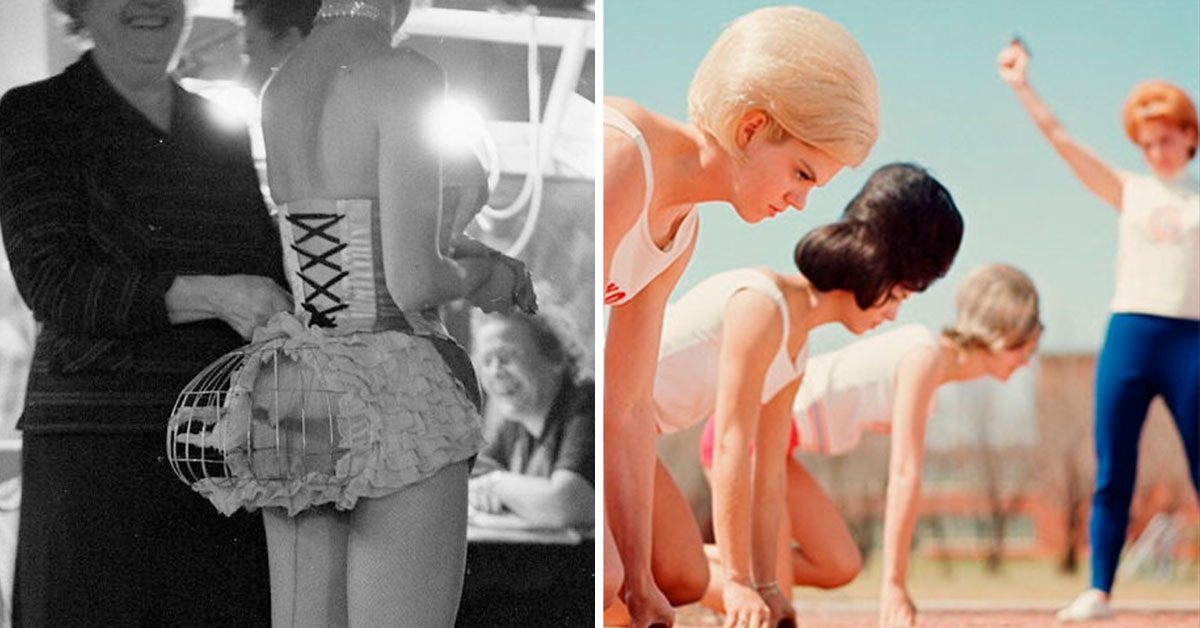Odd pictures from history often reveal more than just a moment frozen in time; they expose the quirky, unexpected, and downright bizarre sides of the past. This captivating collection does just that. It’s a visual feast of the strange and surreal moments in history. Some are lesser known than others, yet still interesting.
These snapshots are not only amusing but also serve as a testament to our ancestors’ wild creativity and eccentricities. As you flip through these odd pictures, each one weirder than the last, you’ll find yourself intrigued by the stories behind them, proving that history is anything but dull.
Oh, and speaking of oddities, an Instagram page called Got Weird perfectly complements this fascinating theme. Launched back in 2014, Got Weird has become a treasure trove for those intrigued by the peculiar aspects of history.
With over 3,000 posts to its credit, the page has successfully captivated a massive audience, boasting an impressive following of 244,000 people. Its tagline, “everything old is new again,” encapsulates the essence of its content.
Got Weird isn’t just a standalone wonder; it’s affiliated with the Vintage Everyday blog, a popular hub for anyone who has a penchant for cool, old stuff. Much like the Instagram page, this blog is a gateway to the past, showcasing many intriguing and sometimes whimsical historical artifacts.
Together, they form a delightful duo for history buffs and casual browsers alike, offering a fresh perspective on what we might otherwise consider outdated.
1. A Mother And Her Son On Their Way To A Pride Walk, 1985
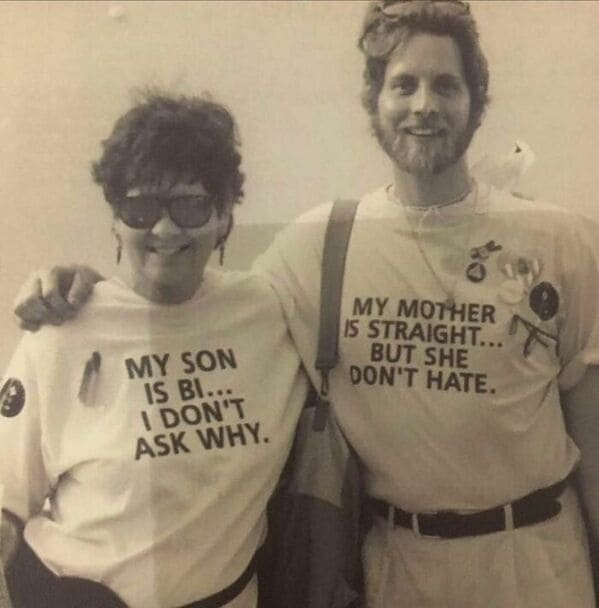
2. A Man Posing With A Donkey In His Lap, Ca. 1910s
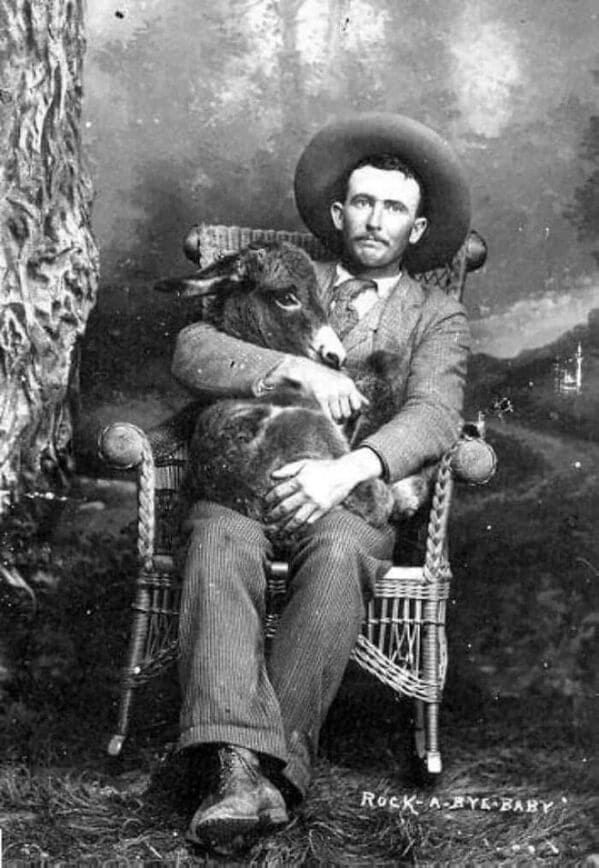
3. Paparazzi Take Pictures Of Bill Clinton’s Cat Named Socks, 1992
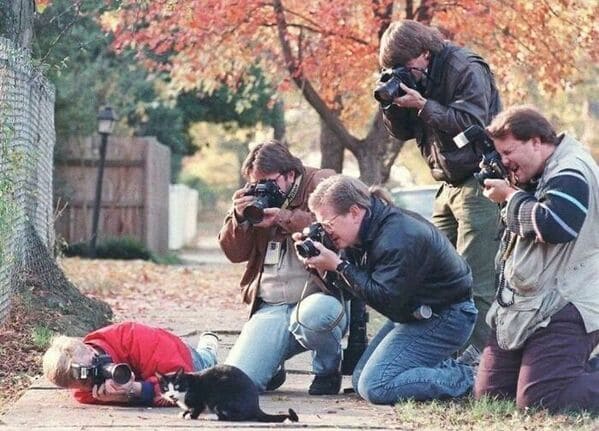
4. The Librarian At Lorain Ohio, Public Library Is Looking At The 50,000 Book Chaos After One Shelf Fell Over, The Rest Fell Like Dominoes, 1971
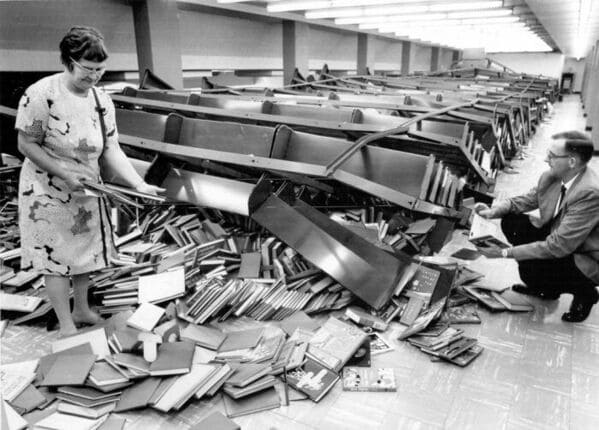
5. The Higher The Hair The Faster The Runner, The Abilene, Texas Track Team, 1967
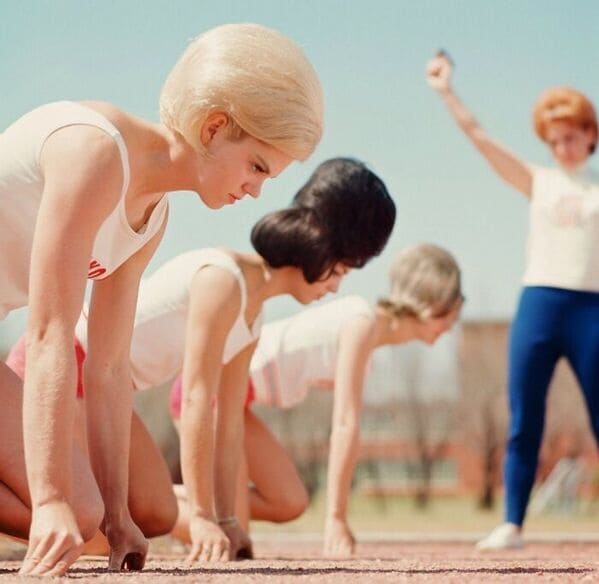
6. A Family Out For A Ride In The UK, Ca. 1930s… And Clearly Safety Wasn’t An Issue Back Then
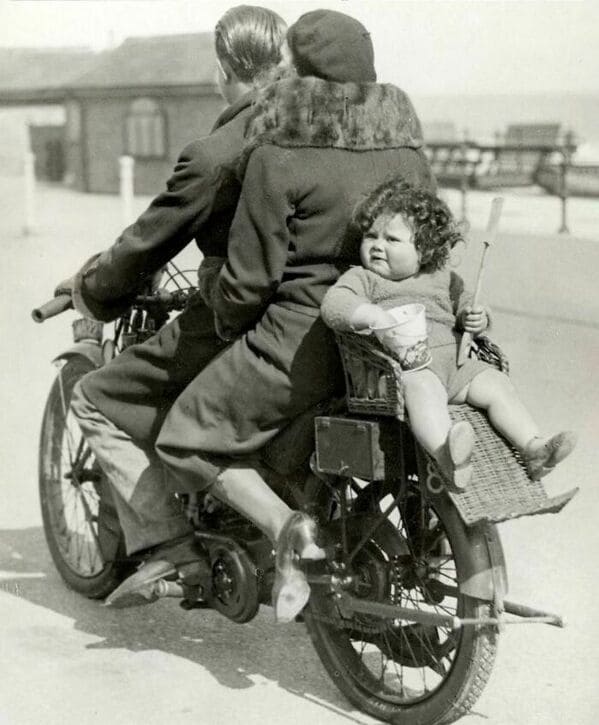
7. A Picnic At The California Alligator Farm In The 1920s, Located In The Lincoln Heights Neighborhood Of Los Angeles Between 1907 And 1953
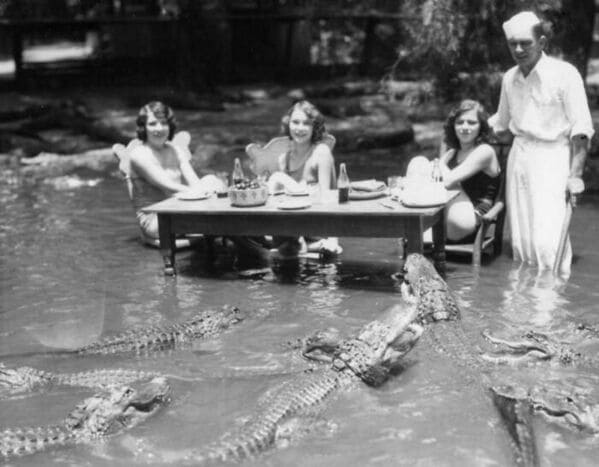
The farm had 20 ponds for the trained alligators where patrons could mingle freely with them
8. This Classroom Celebrating Halloween In The ’80s
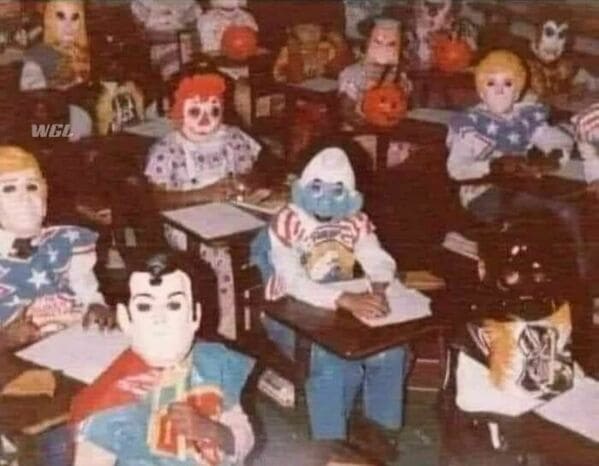
9. Maureen Murray (#18) Of Alexandria, Virginia Won The Local Princess Diana Look-Alike Contest Which Took Place At The “Champion Sports Bar” In Washington D.C. On November 5, 1985
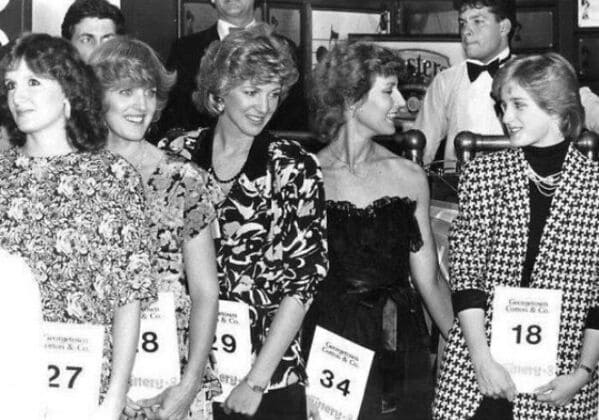
The contest was held because the Prince and Princess of Wales will be in Washington a week later
10. British Actress Jessie Matthews Supporting An Enormous Headdress For The Revue ‘Evergreen’ (1934)
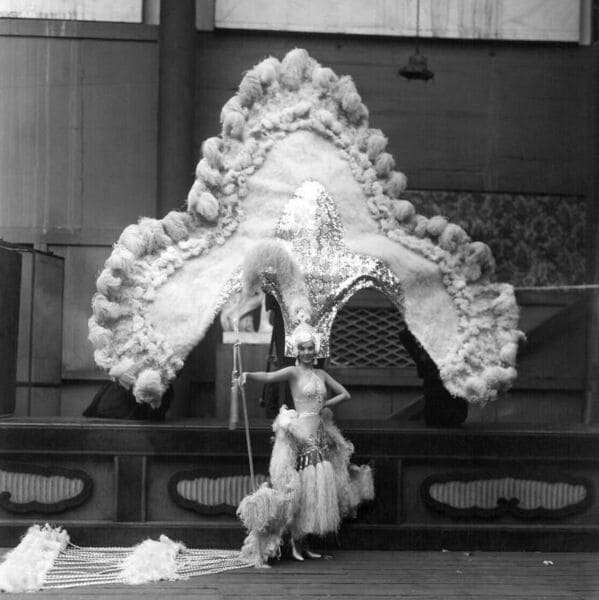
11. A Man Experiences Irony As His Car, Laden With Used Tires, Has A Flat Tire, Houston, Texas, 1966
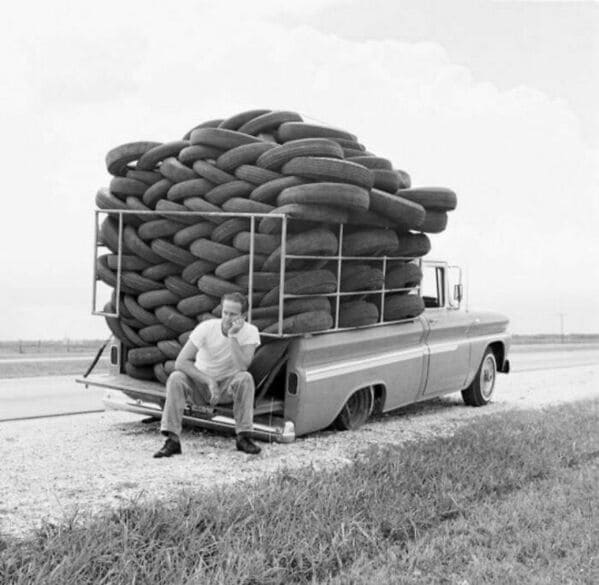
12. Showgirl With A Stuffed Bird In A Cage On Her Hindquarters At The Latin Quarter Nightclub, New York, 1952
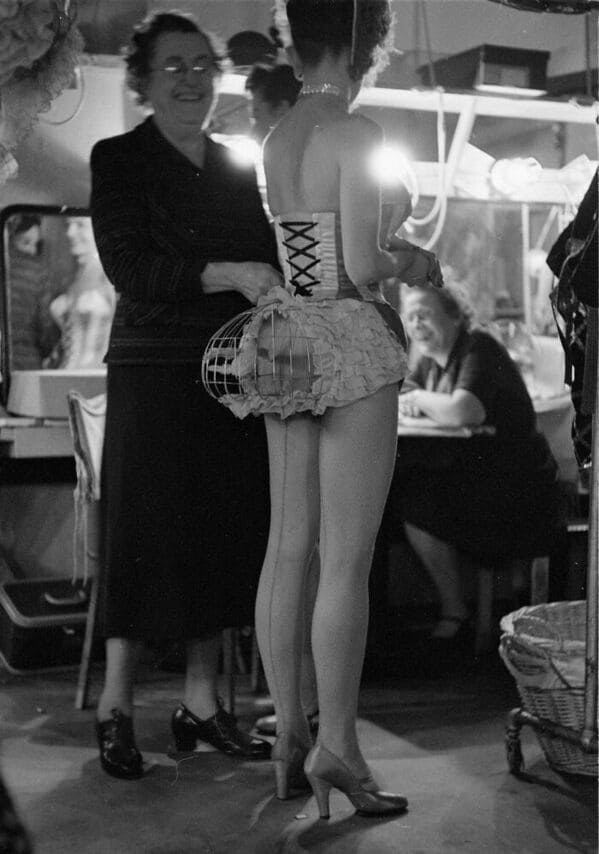
13. A Diver Photographed After Ascending From The Oily Interior Of The Sunken Battleship Uss Arizona. Photograph Taken At Pearl Harbor, Hawaii In The Days Following The Attack On Pearl Harbor In December 1941
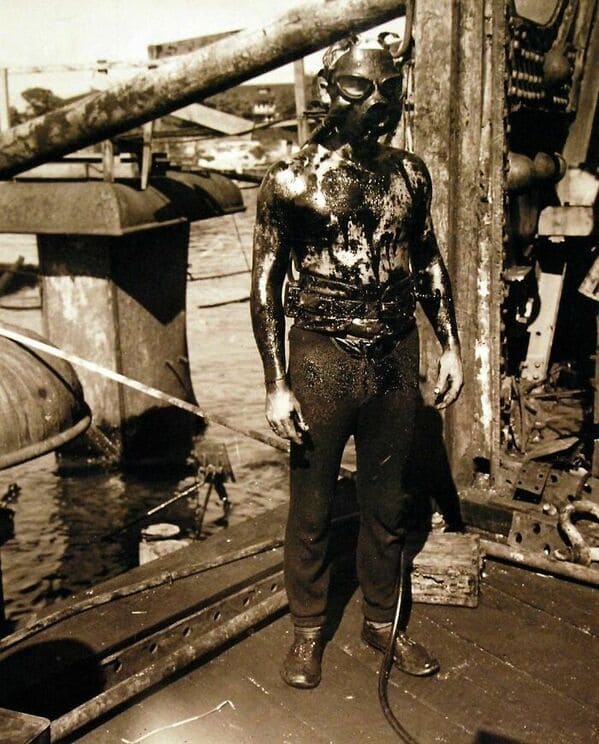
14. These DeLoreans Were All Hiding From Hurricane Dorian In Storage! Delorean Motor Company Florida Posted This, Ensuring All The Cars Stay Safe In The Hurricane
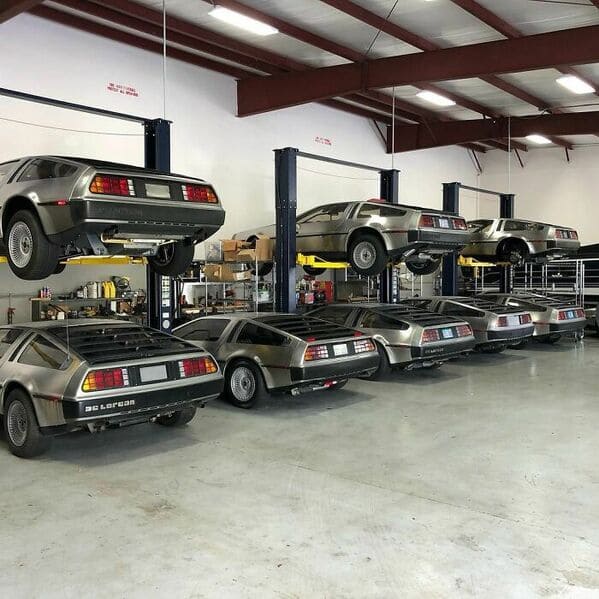
15.‘Flying Saucer’ Gas Stations In Kyiv From The Late 1970s And Early 1980s
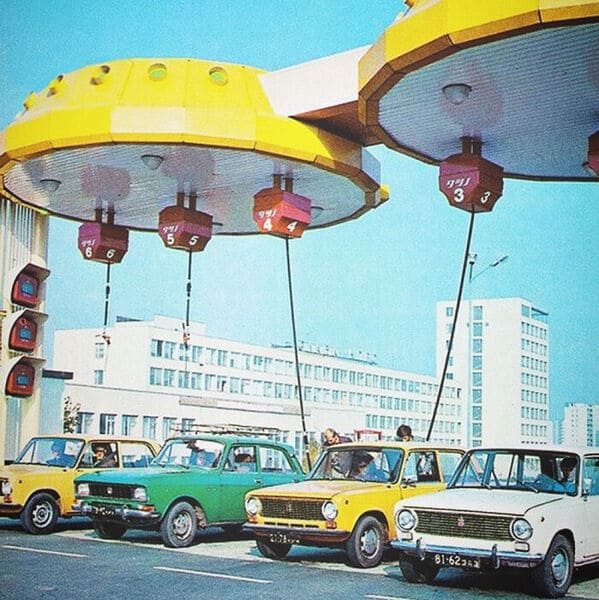
16. Rosalind Russell Riding Bicycle On The Set Of “The Trouble With Angels” (1966)
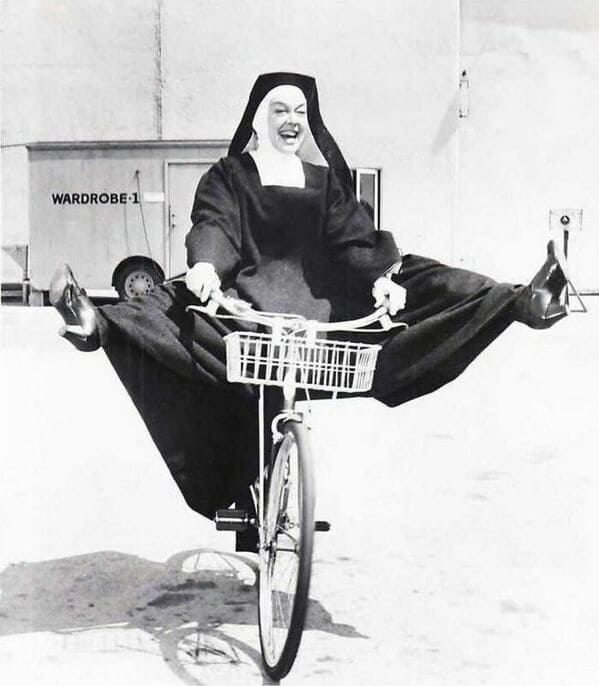
17. Shoe Phone From 1965
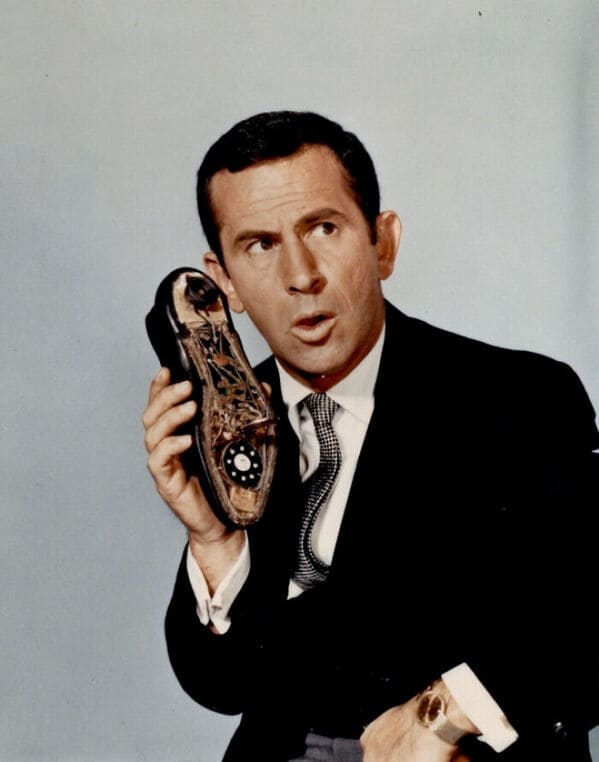
18. Mugshot Of John Wojtowicz, Who Unsuccessfully Tried To Rob A Bank On August 22, 1972, To Pay For His Wife Eden’s Gender Reassignment Surgery
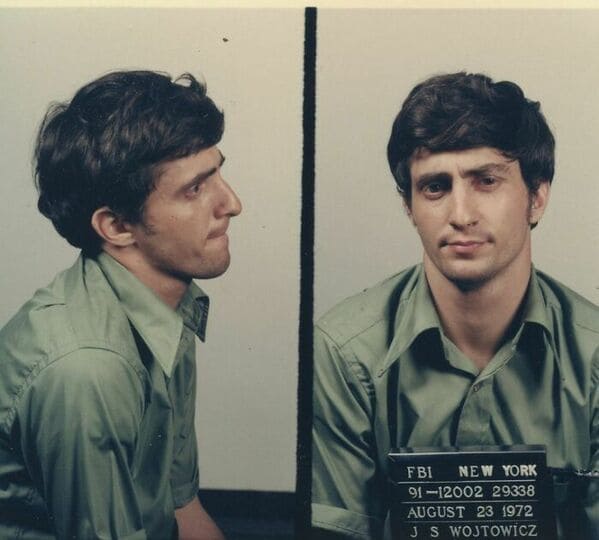
Apparently, Wojtowicz had based his plans on the movie, The Godfather (1972), which he had watched earlier that day. 2,000 onlookers, FBI, roof-top snipers, TV crew, and police all gathered at the Chase Manhattan bank in Gravesend, Brooklyn on a hot summer night.
Wojtowicz held 7 hostages for 14 hours during which time he demanded food for the hostages, paid the pizza delivery boy wads of cash, threw money at the outside onlookers, shot through the bank’s exit rear door (fearing the police would storm it), and accidentally fired a shot after dropping his rifle on the floor. In the end, his robbery attempt failed, and he was arrested and sentenced to 20 years in prison, of which he served five.
Wojtowicz’s story was later turned into a movie called Dog Day Afternoon (1975), starring Al Pacino and John Cazale, both of whom, interestingly enough, had starred in The Godfather. For the rights to his story, Wojtowicz was paid $7,500 and 1% of the movie’s net profits, which he gave to Eden. After her operation, Eden married someone else before dying of AIDS-related pneumonia in 1987. Wojtowicz attended her funeral and delivered a eulogy. J
ohn Wojtowicz spent the rest of his days in New York. At one point, he even applied to work as a guard at a Chase Bank, reportedly claiming, “I’m the guy from Dog Day Afternoon, and if I’m guarding your bank, nobody’s going to rob the Dog’s bank.” They declined. He spent some of his final years on welfare before dying of cancer in 2006
19. “Glass” Tops For Convertibles, Similar To The “Blisters” And “Bubbles” Made By The Same Company For War Planes, Have Been Introduced In Los Angeles
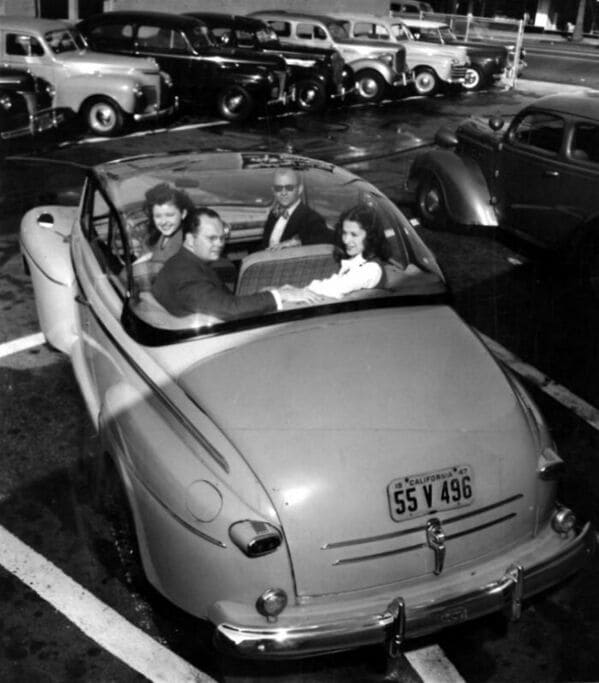
The tops fasten at the same points as regular canvas tops, and are easily removed for storage in the family garage. Although colorless at this time, a choice of ‘tints’ is planned for the future. The tops are said to be easy to clean and that scratches on the surface of the quarter-inch Plexiglas can be removed by polishing with auto polish or wax.
Made by Fabriform Corporation, of Bayseville, Ohio, they are being distributed by a local Ford agency. Shown here in a convertible equipped with a ‘full view’ top are:” Wilda Eggert (left) and Val Eckolt, in front seat; and Jim Dypuy (left) and Sally Hamblin, rear seat, all of the auto agency
20. With A Category 5 Ranking, Hurricane Andrew Was A Powerful And Destructive Storm That Struck The Bahamas, Florida, And Louisiana In August 1992
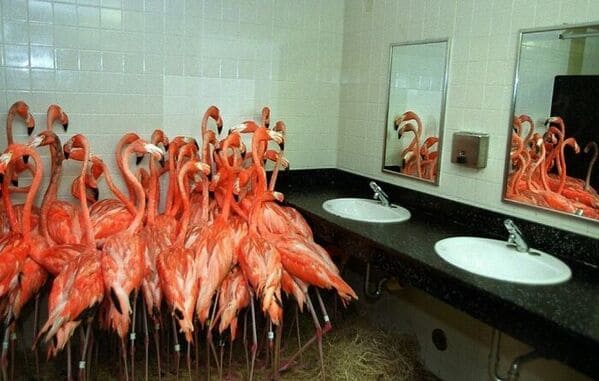
At the time, the National Weather Service estimated the storm had caused $26.5 billion in damages, making it the most expensive natural disaster in U.S. history. Total damages would later be surpassed by Hurricane Katrina in 2005 at $81 billion. Ron Magill, Zoo Miami goodwill ambassador and communications director, took these photographs on Aug. 23, 1992. Magill said he believed there were a total of 38 flamingos in the Zoo Miami (then Miami Metrozoo) flock at the time, and they would have all been put in the restroom together. “
This was part of a hurricane protocol that required us to round up all of the flamingos in the front lake of the zoo and place them in the ladies public restroom, which was used as a bunker, whenever a hurricane warning was issued,” said Magill. The bathroom was the obvious choice—no windows, a tile floor for easy cleanup, and plenty of room for an improvised bed, made out of hay hastily dumped all over the floor.
Most importantly, “it had a ready-made supply of fresh water.” Magill and his coworkers opened up all the stalls, made sure the toilets were full, and set out for the flamingo exhibit to grab the new tenants. The birds were not very cooperative. “These flamingos are flapping everywhere, we’re grabbing them, we’re getting full of flamingo water and stuff,” said Magill. “It got to the point, I’ve got to be honest—I thought, ‘After all this work, this storm better freaking come!’ That’s a cocky young attitude that you have.”
But the team managed the job, and as they left the bathroom, Magill turned back for a moment to appreciate their work. He had always been a photography buff, and liked to carry a point-and-shoot wherever he went, even to emergency zoo batten-downs
21. Sad Little Girl Holds Hands With Her Scratched-Out Sister
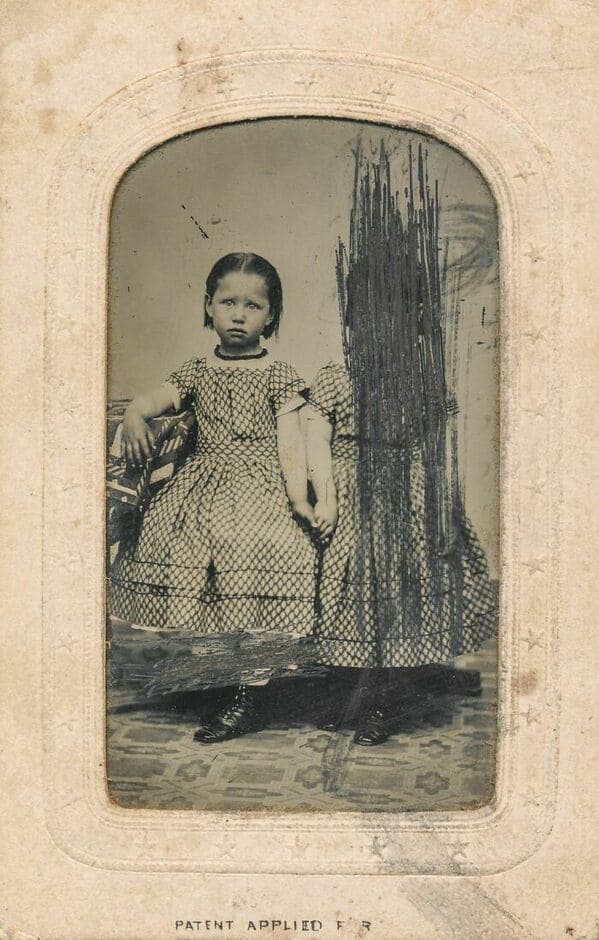
22. Three Million Volts Hit A Car In The Westinghouse Electric Corporation In Pittsburgh For A ‘Lightning Test,’ Ca. 1940s. The Passenger Remained Unharmed
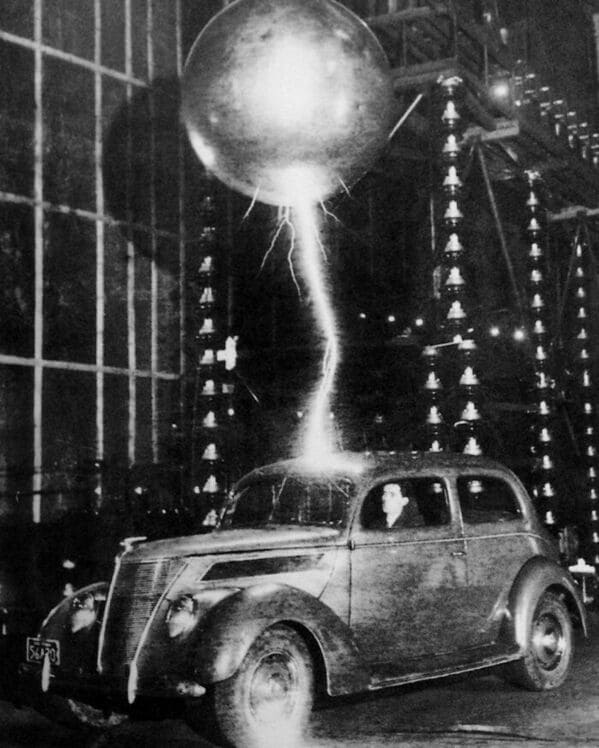
23. A Stunt Car Drives Off The Parking Garage At Marina City Towers During The Filming Of The Hunter, Starring Steve Mcqueen On Sept. 21, 1979, In Chicago
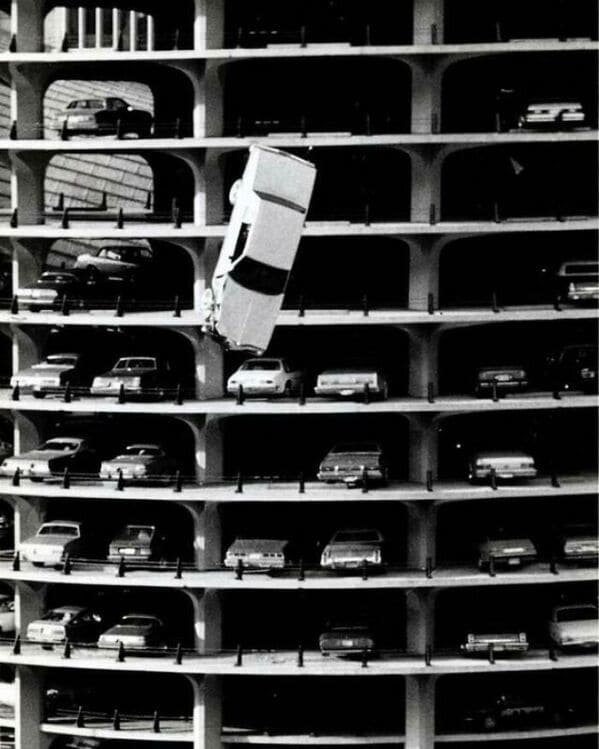
The car crashed into the Chicago River below. This would be McQueen’s last movie before his death in 1980
24. Puritan Against Too Revealing Swimwear On Daytona Beach, Ca. 1982-83. (Photo By Keith Mcmanus)
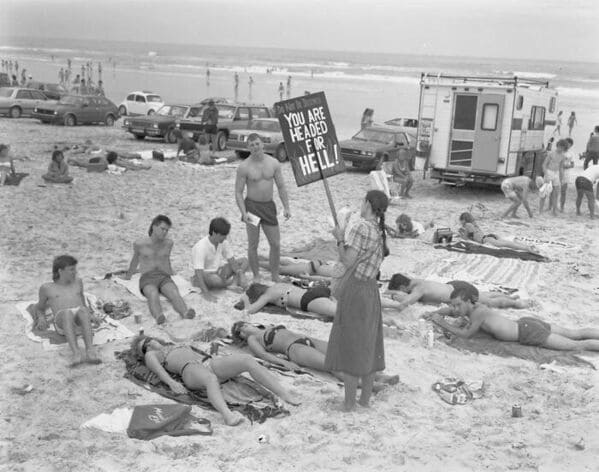
25. In 1954, The Traveler Could Install A Relief Bunk In His Car – An Aluminum Cot That Extends Above The Seats From Front To Rear
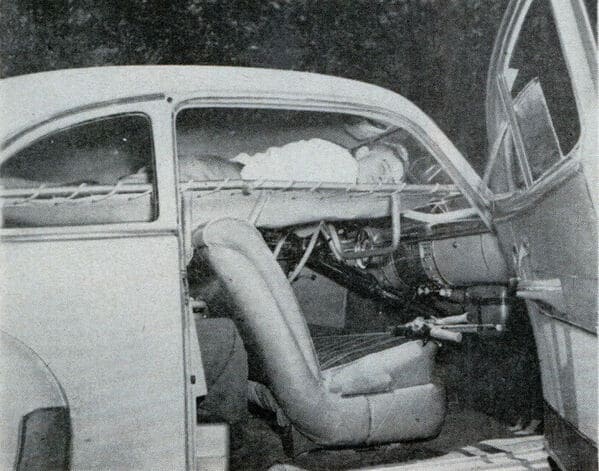
While one person drives the other can sleep in full-length comfort. Made of lightweight tubing, the cot was supported by legs resting above the instrument panel, on top of the two seats, and on the rear-window ledge. It was quickly removed or installed and could be folded for storage. When folded, it was easily packed into place along with any reasonable amount of luggage. The bed could be adjusted for use as a regular cot.
26. Two People Are Wearing Painted-On Eyes At A 1955 Art Student League Ball In NYC
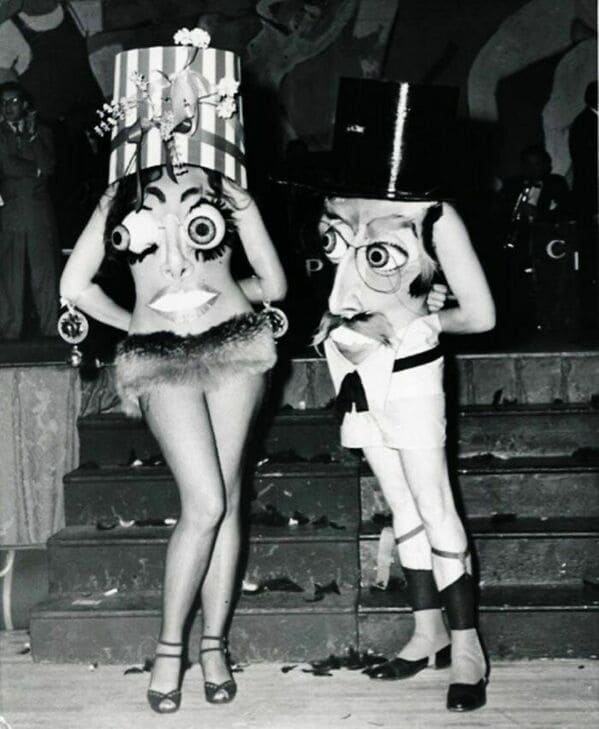
27. Chetak Helicopters Used By Indian Air Force For Ceremonial Flyovers In The 1970s
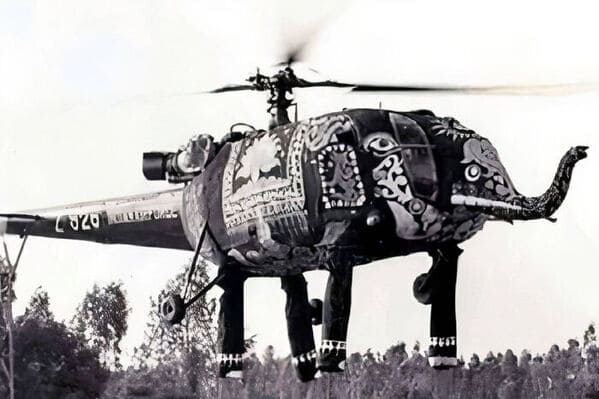
The exact date is difficult to pinpoint. Some claim that the legend of India’s ‘dancing elephant helicopters’ started in 1977 when the first one of its kind took to the air. Others say that it began earlier. Whatever the case, these colorful adaptations, designed to display military might, industrial strength and the country’s cultural diversity, have entered popular folklore. But to find the origins of these so-called ‘flying elephants’, it is necessary to go back to 1969. In that year, India started building a licensed version of the popular French Aérospatiale Alouette III. It was manufactured by HAL and named Chetak – after a warhorse belonging to the 16th century King Maharana Pratap. The name meant devotion, bravery and resistance to occupation.
By modern standards, the Chetak is a light utility helicopter at best. But at the time it was an impressive machine. More than 300 of them were built – not including the original French Alouette IIIs purchased by India – primarily serving with the Indian Air Force (IAF), and it was only in the 2010s that the service considered replacing them. A participant in many local conflicts, the aircraft became an icon in India, akin to the Vietnam War-era Bell UH-1 in the US or the Mil Mi-8 in the post-Soviet countries. However, it wasn’t until the annual Republic Day parade, held in New Delhi at some point in the 1970s, that the Chetak was lifted into stardom
28. In 1928, A Figure Known As The Ice Man Could Be Seen Delivering A 25-Pound Ice Block In Houston, Texas
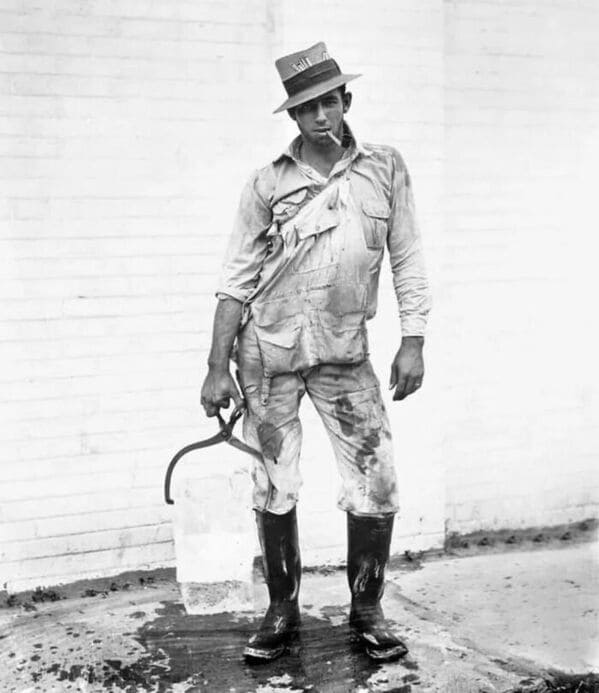
This snapshot reflects a time when the ice trade was a highly profitable industry, primarily during the 19th and early 20th centuries. Ice was harvested from natural sources such as ponds and streams and then transported via railroads or ships to various destinations worldwide. An intricate network of ice wagons was responsible for the final distribution of this valuable commodity. The roots of this industry can be traced back to 1806 when Frederic Tudor, also known as the Ice King, initiated the ice trade in New England by shipping ice to his affluent clientele in the Caribbean.
Over the years, his enterprise expanded to encompass regions like Cuba and the southern United States. Eventually, ice was being shipped to destinations as far-flung as India, Australia, China, and South America. At the zenith of the ice trade, this sector in the United States employed a staggering 90,000 individuals and relied on the labor of 25,000 horses. The demand for ice experienced a notable upswing during World War I.
However, once the war concluded, the ice trade saw a precipitous decline due to the advent of refrigeration cooling systems. By the 1930s, modern refrigerators began to gain prevalence in households, and by the 1950s, they had become nearly ubiquitous in both the United States and Europe. This technological advancement rendered the ice trade largely obsolete
29. “Will You Just *look* At My Grandpa Playing Piano!”
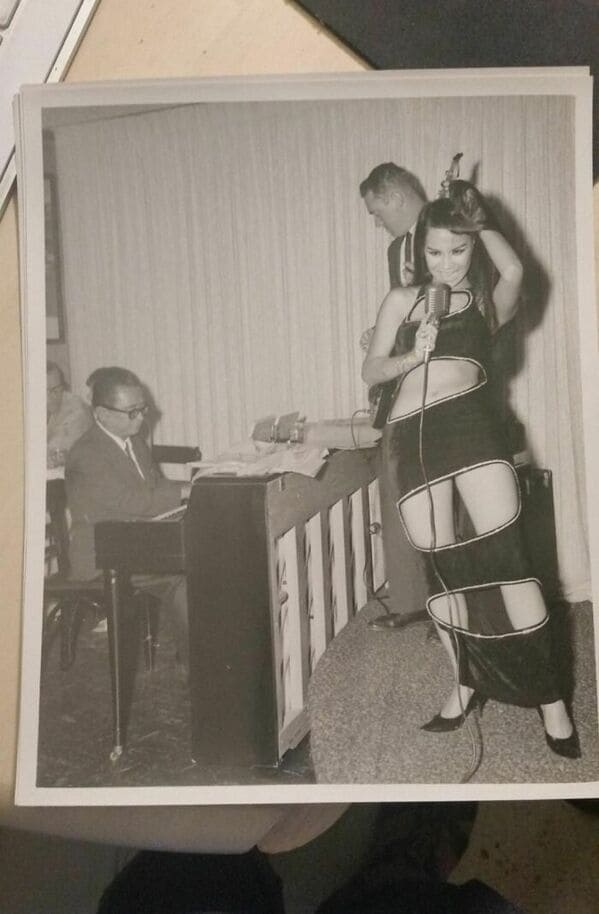
30. Vintage Studio Photos Of Victorian Baby With Their Half-Face Hidden Mother
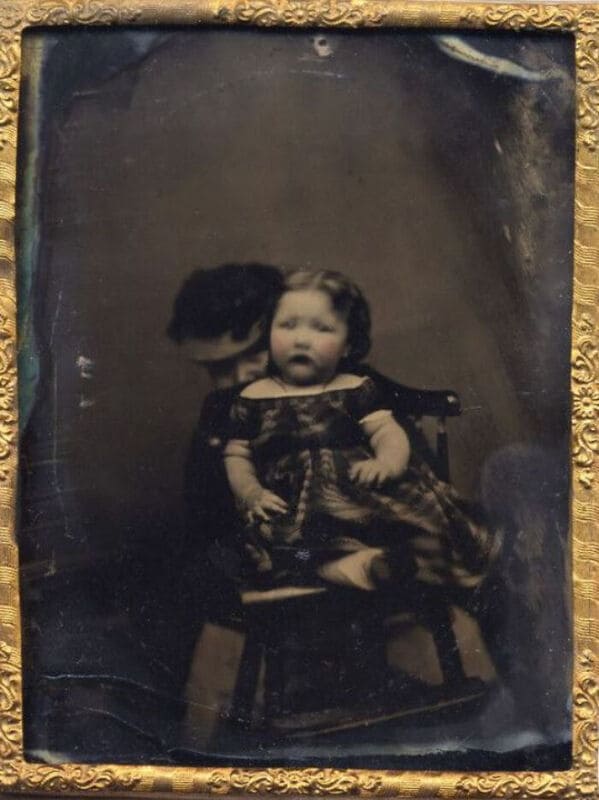
Have you ever had difficulties trying to get a baby to sit down and pose for a picture? It’s a massive headache now, but it was even harder for mothers in the Victorian era when vintage photography technology made posing very difficult.
To understand these photographs, you first need to understand the technical realities of early photography. Unlike the quick snap of picture-taking today, the subject of a portrait in the 19th century needed to sit still for a lot longer. If you wanted a daguerrotype of your baby, you needed to keep the sucker still for between 60 and 90 seconds.
Because of this, mothers were frequently enlisted to keep their children still during the shot. But instead of posing with the children, mothers instead opted to obscure themselves, resulting in photographs in which a mother is holding a child while completely covered in a brocade


